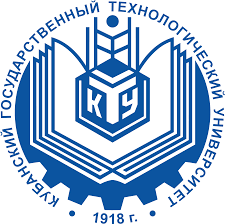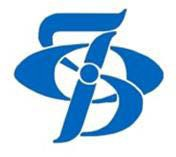
VII Съезд биофизиков России
Краснодар, Россия
17-23 апреля 2023 г.
17-23 апреля 2023 г.


|
VII Съезд биофизиков России
Краснодар, Россия
17-23 апреля 2023 г. |
 |
Программа СъездаСекции и тезисы:
Биомеханика. Биологическая подвижностьСравнение влияния тропомодулина1 на актин-миозиновое взаимодействие в сердечной и скелетных мышцахА.М. Кочурова1*, Е. Бельдия1,2, Е. Сазонова1,2, Д. Щепкин1, Г. Копылова1 1.Федеральное государственное бюджетное учреждение науки Институт иммунологии и физиологии Уральского отделения Российской академии наук; 2. Уральский Федеральный Университет им. Б.Н. Ельцина, г Екатеринбург, Россия; * kochurova.a.m(at)mail.ru Введение. Для сокращения поперечнополосатых мышц необходима строго упорядоченная структура сократительного аппарата, в том числе определенная длина и стабильность тонких нитей, которые контролируются рядом белков, включая тропомодулин (Tmod). Tmod взаимодействует с медленно растущим минус-концом актиновой нити и двумя молекулами тропомиозина (Tpm). В сократительном аппарате миокарда и скелетных мышц экспрессируется изоформа Tmod1. Показано, что Tmod влияет на силогенерирующую способность скелетных мышц. Нокаут гена TMOD1 приводил к появлению изоформы Tmod3 на минус-конце актиновой нити и падению генерируемой мышцами силы. Ранее мы обнаружили, что Tmod принимает участие в актин-миозиновом взаимодействии в миокарде, и эффект его зависит от изоформ Tmod [Kopylova et al. 13th International Multiconference on “Bioinformatics of Genome Regulation and Structure/Systems Biology” – BGRS/SB-2022. Novosibirsk, 04-08 of July, 2022. P. 46-47], что может объясняться разницей аминокислотной последовательности в N-концевой части изоформ тропомодулина, содержащей сайты связывания тропомиозина. Мы сравнили влияние Tmod1 на актин-миозиновое взаимодействии в левом желудочке сердца и быстрых скелетных мышцах.
Материалы и методы. Миозин получали из левого желудочка сердца барана и быстрой скелетной мышцы psoas кролика. Актин и скелетный тропонин (Tn) выделяли из m. psoas кролика. Сердечный тропонин (Tn), альфа-тропомиозин (Tpm) и Tmod1 человека экспрессировали в E.coli. Для исследования молекулярного механизма влияния Tmod1 на актин-миозиновое взаимодействие использовали in vitro подвижную систему (ИПС). Регулируемы тонкие нити реконструировали в проточной ячейке из флуоресцентно окрашенного F-актина, Tpm и Tn. С сердечным миозином использовали нити, содержащие сердечный Tn, со скелетным миозином – скелетный Tn. Результаты. Обнаружено, что Tmod1 по-разному влияет на актин-миозиновое взаимодействие в миокарде и скелетных мышца. Tmod1 дозо-зависимо снижал скорость скольжения актин–Tpm нитей, содержащих актин и Tpm, по сердечному миозину в ИПС: концентрация Tmod1, при которой скорость нитей уменьшалась в два раза, составила 59.4±2.9 nМ. Tmod1 не оказывал эффекта на скорость актин-Tpm нитей со скелетным миозином. Влияние Tmod1 на кальциевую регуляцию актин-миозинового взаимодействия исследовалось путем анализа зависимости скорости скольжения тонких нитей по миозину от концентрации кальция в ИПС. Добавление 500 нМ Tmod1 снижало на 0.15 рСа кальциевую чувствительность (концентрацию кальция, при которой скорость нитей полумаксимальная) скорости скольжения тонких нитей по сердечному миозину, и не влияло на характеристики кальциевой зависимости скорости со скелетными белками. Одним из механизмов регуляции актин-миозинового взаимодействия является активация тонких нитей поперечными мостиками миозина, мостик-мостиковая кооперативность (Xb-Xb кооперативность). Мы изучили влияние Tmod1 на Xb-Xb кооперативность, анализируя в ИПС зависимость скорости актин–Tpm нитей от концентрации миозина, загружаемого в проточную ячейку. Tmod1 улучшал Xb-Xb кооперативность с сердечным миозином, уменьшая концентрацию, при которой скорость достигает половины от максимальной, но не влиял на неё со скелетным миозином. Заключение. Для сравнения эффекта Tmod1 на актин-миозиновое взаимодействие в миокарде и быстрых скелетных мышцах мы использовали изоформы белков (миозин, Tn и Tpm), экспрессирующиеся в этих мышцах. Tmod1 уменьшал кальциевую чувствительность актин-миозинового взаимодействия и усиливал Xb-Xb кооперативность с сократительными белками миокарда, но не влиял на характеристики взаимодействия скелетного миозина с актином. Таким образом, эффект тропомодулина на актин-миозиновое взаимодействие зависит от изоформного состава сократительных и регуляторных белков. Эксперименты выполнены на оборудовании ЦКП ИИФ УрО РАН и поддержаны грантом РНФ № 22-24-00729. Comparison of the effect of tropomodulin1 on actin-myosin interaction in cardiac and skeletal musclesA. Kochurova1*, E. Beldiia1,2, E. Sazonova1,2, D. Shchepkin1, G. Kopylova1 1. Institute of Immunology and Physiology, Ural Branch of the Russian Academy of Sciences; 2.Ural Federal University, Yekaterinburg, Russia; * kochurova.a.m(at)mail.ru Introduction. The contraction of striated muscles requires a strictly ordered structure of the contractile apparatus, including a certain length and stability of thin filaments, which are controlled by a number of proteins, including tropomodulin (Tmod). Tmod interacts with the slowly growing minus end of the actin filament and two molecules of tropomyosin (Tpm). The Tmod1 isoform is expressed in the contractile apparatus of the myocardium and skeletal muscles. It has been shown that Tmod affects the force generating capacity of skeletal muscles. Knockout of the TMOD1 gene resulted in the appearance of the Tmod3 isoform at the minus end of the actin filament and a decrease in the force generated by the muscles. We have previously found that Tmod is involved in actin-myosin interaction in the myocardium, and its effect depends on Tmod isoforms [Kopylova et al. 13th International Multiconference on “Bioinformatics of Genome Regulation and Structure/Systems Biology” – BGRS/SB-2022. Novosibirsk, 04-08 of July, 2022. P. 46-47], which can be explained by the difference in the amino acid sequence in the N-terminal part of the Tmod isoforms containing Tpm binding sites. Here, we compared the effect of Tmod1 on actin-myosin interaction in the left ventricle of the heart and fast skeletal muscles.
Materials and methods. Myosin was obtained from the left ventricle of the sheep heart and the fast skeletal muscle psoas of the rabbit. Actin and skeletal troponin (Tn) were isolated from m. psoas of the rabbit. Human cardiac troponin (Tn), alpha tropomyosin (Tpm), and human Tmod1 were expressed in E. coli. To study the molecular mechanism of the influence of Tmod1 on the actin-myosin interaction, an in vitro motility assay (IVMA) was used. Regulated thin filaments were reconstructed in a flow cell from fluorescently stained F-actin, Tpm and Tn. With cardiac myosin, filaments containing cardiac Tn were used, with skeletal myosin, skeletal Tn. Results. It was found that Tmod1 differently influences the actin-myosin interaction in the myocardium and skeletal muscle. Tmod1 dose-dependently reduced the sliding speed of actin–Tpm filaments containing actin and Tpm over cardiac myosin in the IVMA: the concentration of Tmod1 at which the filament velocity decreased twofold was 59.4±2.9 nM. Tmod1 had no effect on the speed of actin-Tpm filaments with skeletal myosin. The effect of Tmod1 on the calcium regulation of actin-myosin interaction was studied by analyzing the dependence of the sliding speed of thin filaments on myosin on the calcium concentration in the IVMA. The addition of 500 nM Tmod1 reduced by 0.15 pCa the calcium sensitivity (calcium concentration at which the filament speed is half maximum) of the sliding speed of thin filaments on cardiac myosin and did not affect the characteristics of the calcium dependence of the speed with skeletal proteins. One of the mechanisms of regulation of actin-myosin interaction is the activation of thin filaments by the crossbridges of myosin, crossbridge-crossbridge cooperativity (Xb-Xb cooperativity). We studied the effect of Tmod1 on Xb-Xb cooperativity by analyzing the dependence of the actin–Tpm filament speed on the concentration of myosin loaded into the flow cell in IVMA. Tmod1 improved Xb-Xb cooperativity with cardiac myosin by decreasing the concentration at which the speed reaches half of the maximum, but did not affect it with skeletal myosin. Conclusion. To compare the Tmod1 effect on actin-myosin interaction in the myocardium and fast skeletal muscles, we used protein isoforms (myosin, Tn, and Tpm) expressed in these muscles. Tmod1 reduced the calcium sensitivity of the actin-myosin interaction and enhanced Xb-Xb cooperativity with myocardial contractile proteins but did not affect the haracteristics of the interaction of skeletal myosin with actin. Thus, the effect of tropomodulin on actin-myosin interaction depends on the isoform composition of contractile and regulatory proteins. The experiments were performed with the equipment of the Shared Research Center of Scientific Equipment of Institute of Immunology and Physiology and supported by the RSF grant no. 22-24-00729. Докладчик: Кочурова А.М. 498 2023-02-01
|